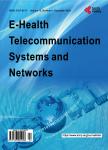Dynamic Interaction through a Reactive Interface in Patients with Dementia, by Means of Cognitive Stimulation
Dynamic Interaction through a Reactive Interface in Patients with Dementia, by Means of Cognitive Stimulation作者机构:Departamento de Sistemas Universidad Autónoma Metropolitana-Azcapotzalco México City México Posgrado en Ciencia e Ingeniería de la Computación Universidad Nacional Autónoma de México México City México Escuela Superior de Cómputo-Instituto Politécnico Nacional México City México Posgrado en Diseno Línea: Visualización de la Información Universidad Autónoma Metropolitana-Azcapotzalco México City México
出 版 物:《E-Health Telecommunication Systems and Networks》 (远程医疗系统和网络(英文))
年 卷 期:2015年第4卷第4期
页 面:57-67页
学科分类:1002[医学-临床医学] 100214[医学-肿瘤学] 10[医学]
主 题:Dementia Alzheimer Cognitive Stimulation Artificial Consciousness Cognitive Structure of the Emotions
摘 要:Dementia is a syndrome of chronic and progressive nature, characterized by the deterioration of cognitive functions and behavior, which causes a disability and dependence on others. Alzheimer’s Disease is a type of dementia that affects cognitive functioning, behavior, and overall functionality of those who suffer from the irremediably progressive form, as it is a neurodegenerative disease. For this reason, development of a reactive interface is proposed to be inserted in a cognitive stimulation program. This program offers a series of exercises of mental functions, in order to delay or slow down the progress of this illness. The reactive interface allows access to these exercises and incorporates a user profile that predicts the possible emotions that may be experienced during the work sessions. In order to accomplish this, a cognitive structure of emotions is developed to be included in the reactive profile. This will allow enhancement of the interaction between the system and the patient. The user’s emotional state may interfere, considering within the design stage the phenomenon of altered consciousness during this degenerative process. The consciousness represents the interface of human beings with our environment. This proposal allows us to obtain information related to the user’s emotional state during the performance of specific cognitive tasks, permitting us to optimize the proposed stimulation activities.



